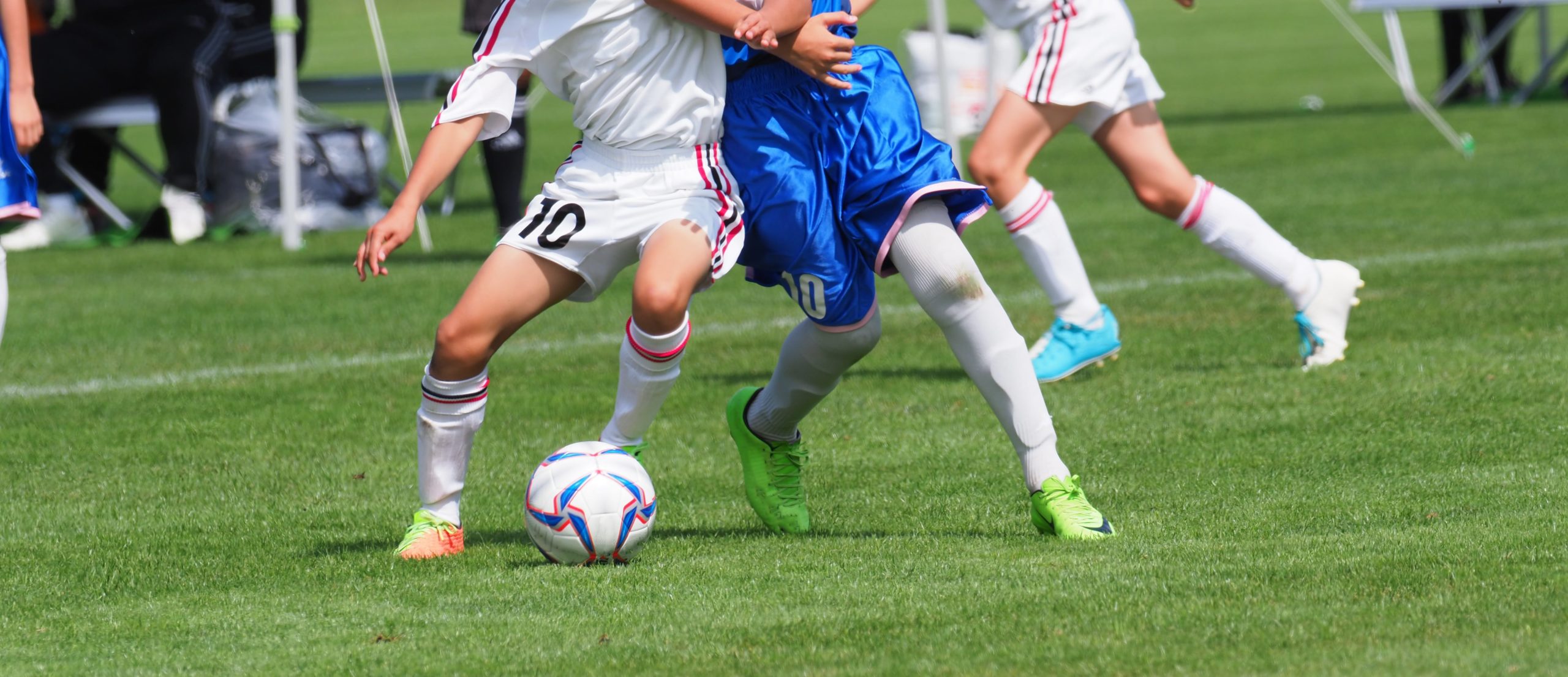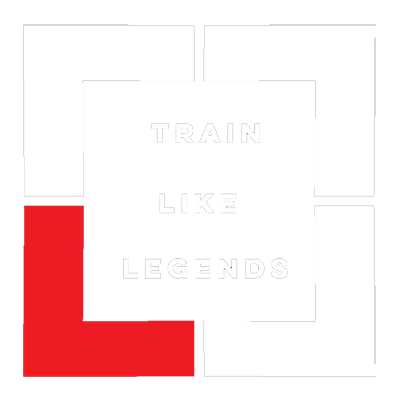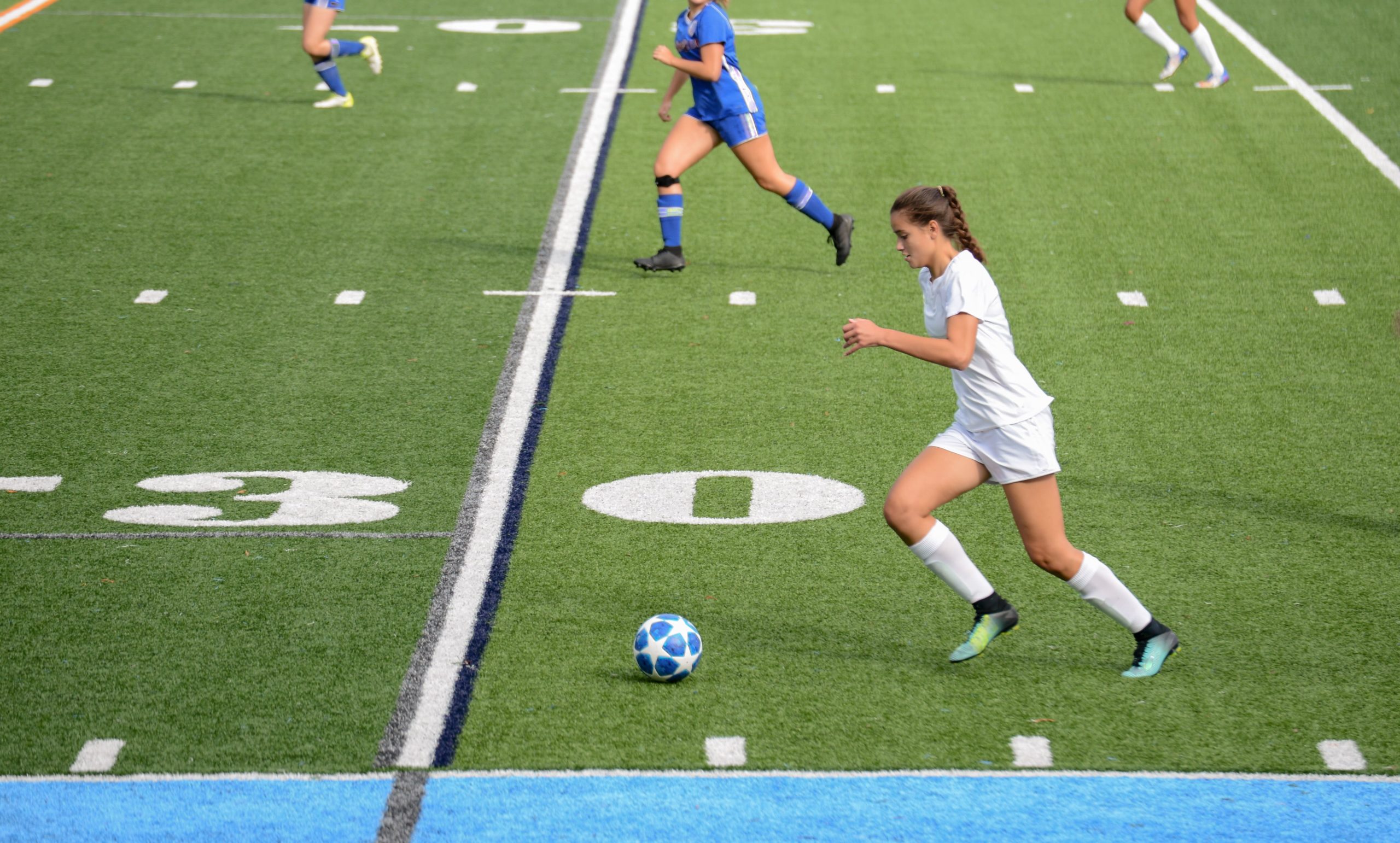
Finding the right youth soccer position is all about analyzing your personal skill set. Physical ability, foot skills, and field awareness are some of the most important things to evaluate. Your team strategy, formation, and even your competition may be relevant as well. A team playing a 4-4-2 will ask for different things from their strikers than a standard 4-3-3 or even a 4-5-1, so understanding the way that your team operates and which strengths your team naturally possesses can ultimately determine where you’ll fit best. With that being said, there are a few signs that a specific role might be your best fit. The right coaching education can maximize a player’s understanding of the game and help them to grow in their role on the team.
Interested in changing positions? Learn more about the ins and outs of each role below.
How to Play Good Defense
Defenders typically occupy the center of the formation or flank the outside. Common defensive formations feature four defenders, often with two center backs and two outside backs. The center backs may also be arranged in a “stopper-sweeper” formation as well, in which one plays in front of the other.
What kinds of traits make for a good defender?
• Strength and Speed
Defenders need speed to keep up with their opponents’ offensive players. Center backs especially need strength for pushing offensive players off the ball, as well as to be able to win headers and shield the ball.
• Defense and Shielding Ability
This may sound obvious, but defenders must know how to defend well! This means that you should be great at tackling (without fouling), guarding your opponent, and double teaming. Defenders should also shield the ball well to maintain their team’s possession.
• Heading and Passing Abilities
Heading ability is essential when you’re defending against arial passes. Defenders must also be able to pass the ball quickly in order to reduce a team’s possession percentage. This means passing to feet, as well as making effective long passes through the air.
Playing Midfielder at the High School, Club or Academy Level
What goes into being a high school, club or academy level midfielder?
Midfielders are often viewed as the engines of the team. This is especially true of center midfielders, who are tasked with applying pressure to an opposing midfield and challenging 50/50 balls
What traits make for a good midfielder?
• Spatial Awareness and Strategy
Centers play a special role in maintaining formation as a team moves up and down the field. Having good spatial awareness and an awareness of your teammates can be crucial for this position.
• Dribbling and Ball Control
Centers must be able to navigate the crowds and chaos of the field without letting the ball get stolen. Shielding ability is crucial here, as well, especially for the high-pressure role of center midfielders, who are under constant threat from the opposing team.
• Passing and Shooting Ability
Center midfielders must shoot well and be able to get the ball past the opponent’s goalie. This also means that they must be able to strategically pass the ball to a teammate, get into position, and then receive the return pass in order to execute a play.
Playing the Attack Position
What goes into being a high school, club or academy level attacker?
Depending on your formation and offensive strategy, attackers can be broken into two categories: Forwards and strikers. Forwards will often be tasked with creating attacks, making runs, distributing the ball, and working to spread the field. Strikers, on the other hand, are typically stationed at the top of the formation and spend a majority of their time with their back to the opposing goal. Strikers are often asked to receive, possess, and redistribute the ball to the midfield, while helping to create attacks through effective ball control and solid distribution.
What qualities make for an effective forward/attack?
• Shooting Ability
It’s called an “attack” position for a reason. Forwards and strikers are there to get the ball into the net.
• Speed
For both forwards and strikers, speed can help you to get past your opponent’s defenses and maneuver into position to receive, pass, or shoot the ball.
• Heading Ability
Goals don’t play favorites. A good control over heading abilities can be crucial.
• Shielding Ability
These positions are heavily guarded by the opponent’s defensive players. Forwards and strikers must be able to shield the ball from their opponent.
Playing Goalkeeper at a Competitive Level
What goes into being a high school, club or academy level goalie?
Goalkeepers are often thought of as the last line of defense on the soccer field—and for good reason. The goalkeeper (or “goalie”) is there to protect the goal, and as such, they are the only player with the privilege of catching and throwing the ball. That also means that goalkeepers possess a unique set of skills. Let’s look at these in greater detail.
• Reflexes and Speed
Goalkeepers often have to make last-minute decisions. Which opponent plans to shoot the ball? From which side? Should I catch the ball or block it? A good goalkeeper can make these decisions quickly and strategically to protect their goal.
• Defending Ability
Naturally, the goalkeeper needs good defensive skills. In addition to thinking quickly, the goalkeeper must have the physical ability to block the opponent’s shots, which can sometimes involve diving for the ball or making other athletic moves to protect the goal.
• Passing/Throwing Ability
After blocking a shot, the goalkeeper must get the ball back to their teammates. Goalkeepers must understand the lay of the field, and drop a perfectly weighted ball in the best position possible to give their team the advantage.
Soccer Training Your Way
Soccer is a great way to improve your athletic abilities, as well as to forge a path toward women’s leadership. If you’re interested in becoming the best player you can be, consider joining in on our virtual training packages. Train alongside three-time gold medal winner Heather Mitts, and you’ll receive the kind of training that’s shaped soccer legends. Sign up today and get access to our virtual training packages and more. Soccer is your life. Let us help you show it on the field.

